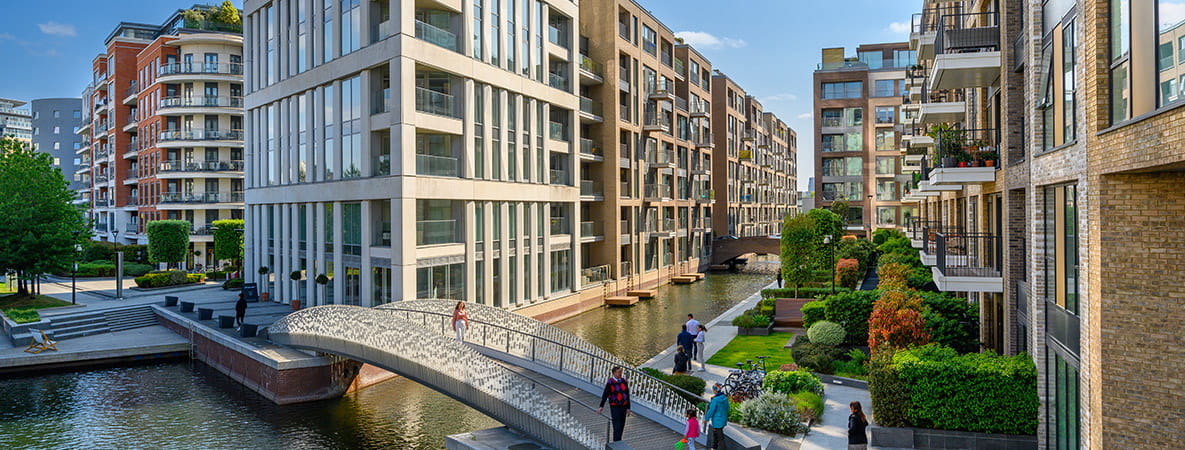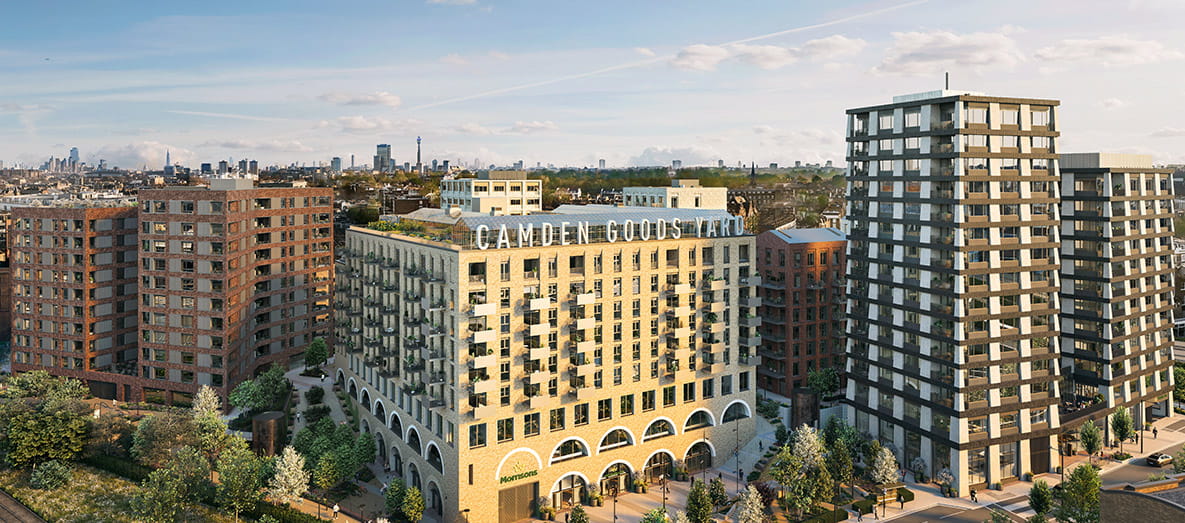In this essay Alison Dowsett, Berkeley Group’s Managing Director of Planning and Policy, sets out what making the best use of brownfield land could do for our future cities. An abridged version of this essay was published in City A.M. on 2 April.
“Every day we are confronted by the decisions of long gone builders, architects and town planners whose names we mostly do not know but whose work defines how we live. As Churchill put it, ‘we shape our buildings; thereafter they shape us.’
London, which is the focus of most of Berkeley Group’s work, is a tapestry of different styles and approaches dating back centuries which combine to make the vibrant modern city of today. Georgian squares, Victorian terraces and Edwardian mansion blocks sit cheek by jowl with modernists estates, art deco landmarks and everything in between, all encircled by a sea of low rise suburbs stretching miles out into the countryside.
The question facing our generation is what decisive contribution will we make to that tapestry. How will the places we build today shape our lives and the lives of those to come? In the midst of a deeply damaging housing shortage, doing nothing is not an option. But pushing London further out into the Home Counties with another onion ring of low-density greenfield housing is also not the solution. More sensible is to make the best use of brownfield land within existing communities to create good green homes for the people that need them.
This is Berkeley’s specialism. For example, our Camden Goods Yard development will turn a vast town centre supermarket and car park into a mixed-use neighbourhood with over 600 homes (35% of which are affordable), a smart new Morrisons store to replace the old one, public squares and green spaces, a community space, allotment gardens, and a rooftop urban farm.
There will also be smaller shops, restaurants, offices and flexible workspace to support Camden’s thriving arts and maker industries. All this will be sustainably located in the centre of town, just a five-minute walk from the nearest Tube stop.
CGI of Camden Goods Yard
Most agree this is a better use of city centre land and delivers some very good things for local people. But regeneration at this scale is never easy nor universally popular, and both the St George (a Berkeley Group company) and Morrisons teams take time and care to engage a wide range of local people, including through the Camden Goods Yard Community Working Group and a Community Development Plan tackling local priorities like crime prevention and youth support. This doesn’t mean they please everyone. But they are creating a place with clear local influence and broad support.
There is no set formula for successful urban regeneration, but a commitment to meaningful community engagement, and honest conversations about the trade-offs involved, are absolute musts. We need to be clear that increasing density presents both challenges and opportunities. But with thoughtful design and placemaking these places can be beautiful and welcome additions to older neighbourhoods which give much more than they take.
London’s housing crisis is not an excuse to build any home, anywhere, at any cost. But it is one of many good reasons to make the best possible use of brownfield land.”
Alison Dowsett, Managing Director, Planning and Policy (Berkeley Ventures), Berkeley Group

